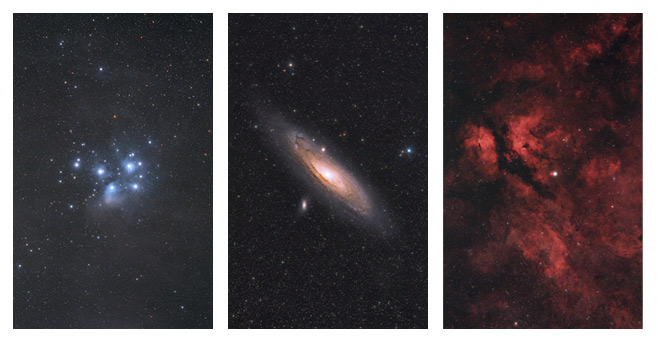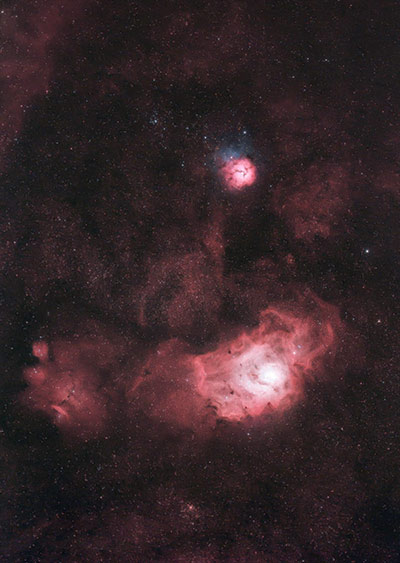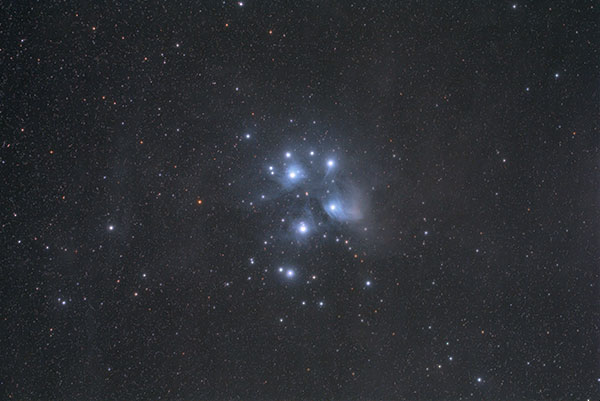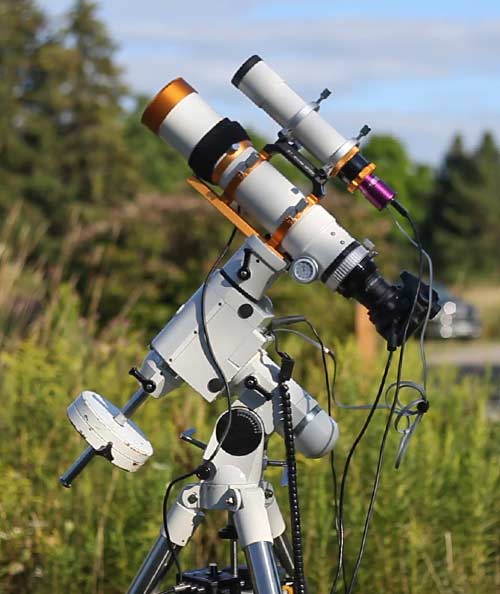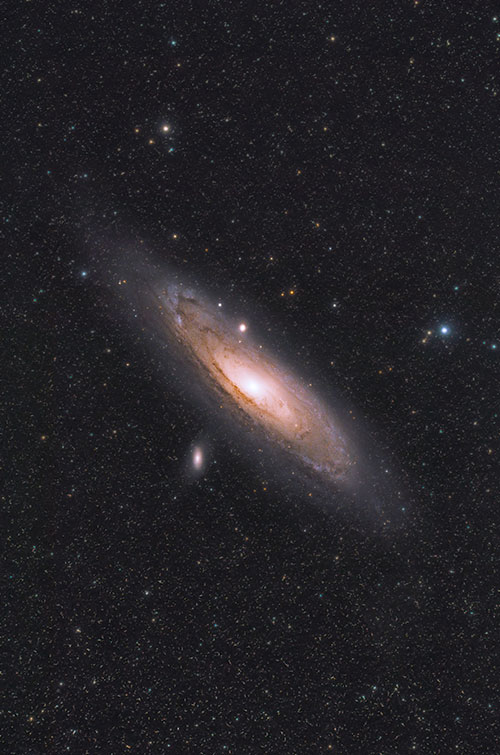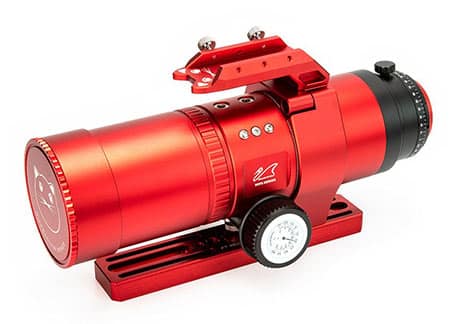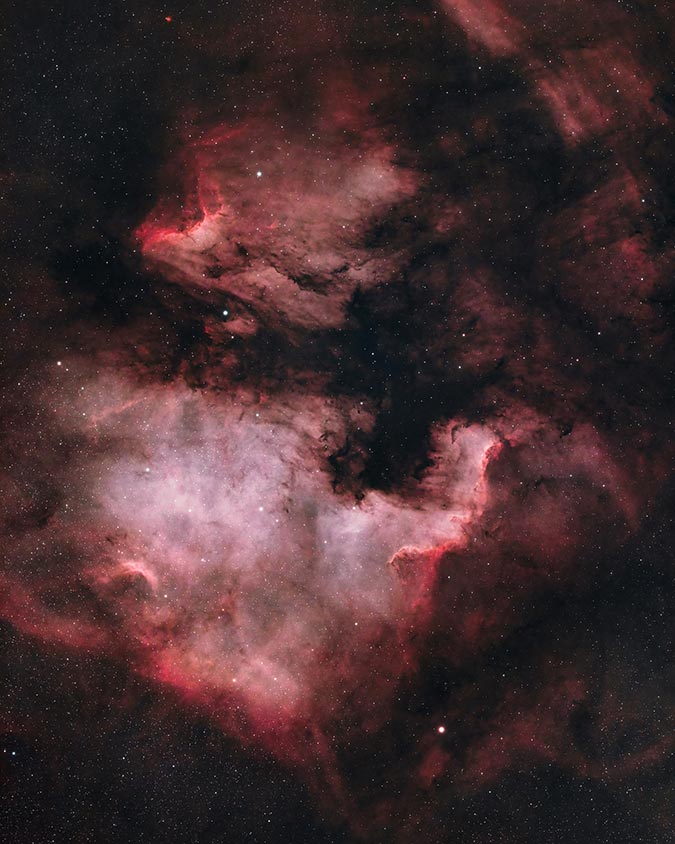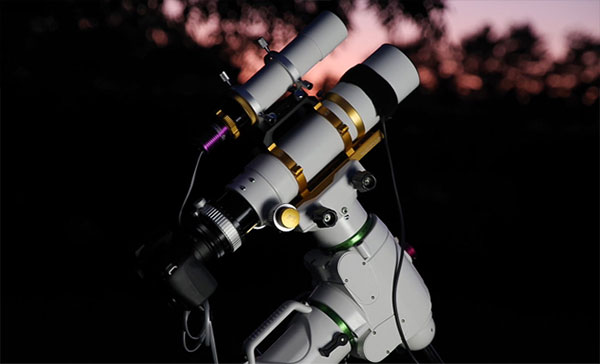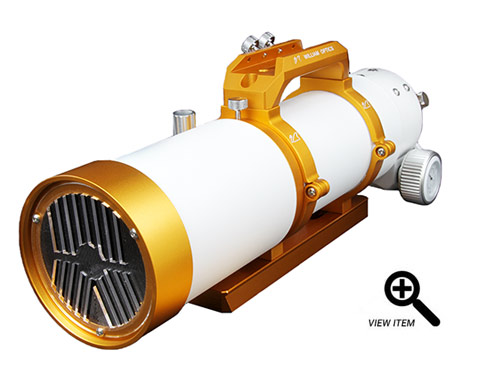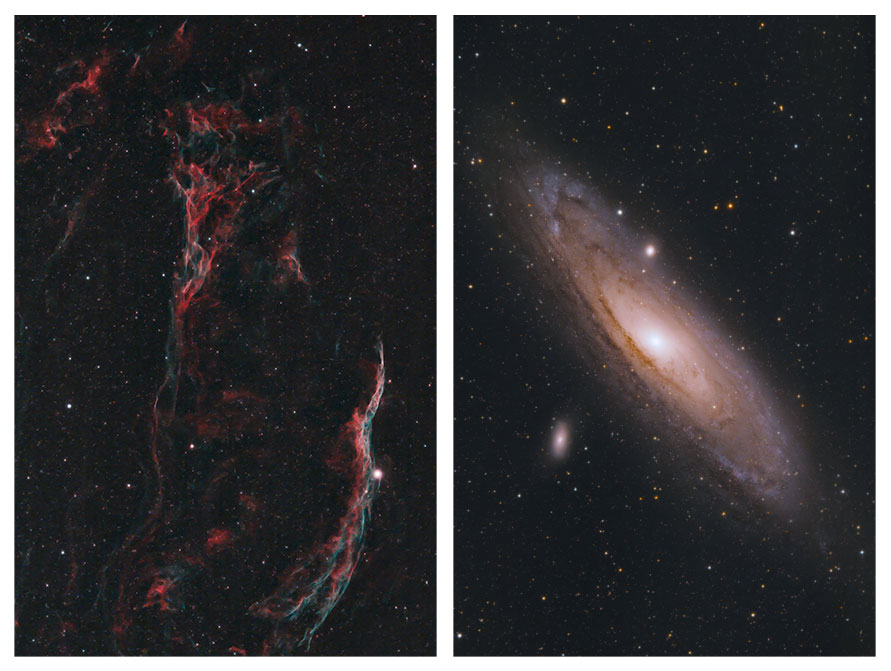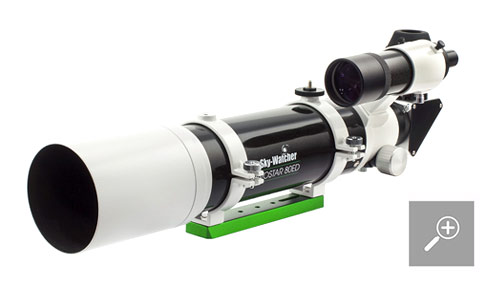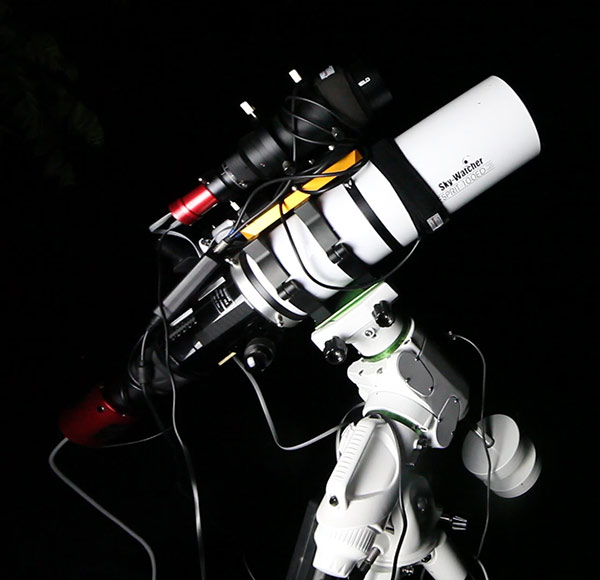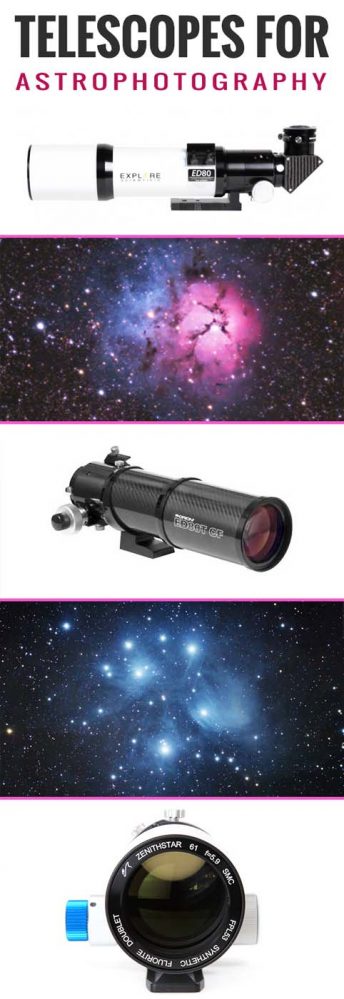Choosing an Astrophotography Telescope: My Top 5
My goal is for you to find an astrophotography telescope that allows you to capture sharp, colorful pictures of stars, galaxies, and nebulae in your own backyard.
What’s the best astrophotography telescope for a beginner? I am often asked this question, and the answer is the one that provides consistent results. If you plan on using a telescope for photography with your DSLR camera, the following list should help you make your decision. These are entry-level, high-quality telescopes with a proven track record of success.
Choosing your first Astrophotography Telescope
First things first. I am not an expert astrophotographer; I am just a guy who’s been able to capture some decent images with modest astrophotography equipment in my backyard. I have over 12 years’ worth of deep-sky astrophotography experience, with countless successful imaging sessions under the stars.
I value reliability, image quality, and practicality above all else. Because I live in a city with plenty of light pollution (and cloudy nights), I need my astrophotography telescope to deliver consistent results when the opportunity arises.
Update: 10 of the Best Astrophotography Telescopes Available (2025)
The Proof is in the Photos, not the Specs
I like to see real results using astrophotography equipment more than the intricate details of optical performance graphs. A telescope’s advanced technical traits are only useful if it is a pleasure to operate.
Keeping an expensive telescope polished and in the house is not my style. This is an overview of the instruments that I consider to be a contender for the best beginner astrophotography telescope.
The Lagoon and Trifid Nebulae captured using the William Optics RedCat 51.
I don’t believe a beginner should jump into this hobby and buy an expensive telescope for astrophotography right away. Astrophotography requires a great deal of patience.
You need to love the process inside and out to overcome the steep learning curve and inevitable frustrations along the way. My list places a large emphasis on affordability and value.
If you are looking for a reliable astrophotography telescope for under $500, I’ve got some bad news. Expect to pay a minimum of $1,000 US for a new model. The used marketplace may offer some savings, but be sure to request detailed information about the condition of the optics before purchasing.
If you compare the prices of these telescopes to a telephoto camera lens, they are quite affordable.
I recommend a small apochromatic refractor as the absolute best choice for beginners.
Proven Winners for Deep-Sky Imaging
When I was starting out, I searched for hours for reviews, testimonials, and product detail pages before purchasing my first primary imaging instrument. Now, there are more astrophotography telescopes available than ever, making the search even more complex.
When you narrow your search to entry-level telescopes with high performance, some clear winners in the best beginner astrophotography telescope category rise to the surface.
Smart choices for those who want results with modest equipment and limited knowledge.
My choices are heavily geared towards the practicality and usability of the telescope in an astrophotography situation. After all, beginners have enough to learn early on and should have the best telescope possible to avoid an agonizing experience in the dark.
These telescopes will grow your interest in the hobby, not ruin it!
I get several emails each day asking which telescope I recommend for beginner astrophotography setups.
This section of the website is long overdue, as it will be nice to have somewhere to direct beginners looking for more information about the telescopes I recommend in my e-mails and messages.
What You Need to Start Imaging
Different vendors will offer various packages for the telescopes listed below. The inclusion of the accessories you need to get started may ultimately be the deciding factor of which telescope you choose.
There are certain accessories that may not come with the telescope you are looking to purchase. Often, this is the reason for fluctuations in price between models with similar specifications. As a rule of thumb, you will need:
- A diagonal for visual observation and mount alignment
- A finder scope with brackets for visual observation and autoguiding implementation
- Tube rings and a dovetail bar, or an integrated dovetail for mounting
- A carrying case to protect the telescope during travel and storage
- A field flattener/reducer to create a flat field for imaging
Before deciding on a particular scope, make sure you add these additional items (if necessary) to your overall budget. It is also wise to confirm the mounting style of the dovetail saddle on your telescope mount.
For example, the Sky-Watcher EQ6-R Pro features a dual saddle design that allows for both v-style and d-style dovetail bars.
The Power of an APO
The 5 telescopes on this list are all small apochromatic (APO) refractors. The main reason I am such a huge fan of this type of telescope is its ability to capture high-quality images consistently. With that being said, let’s take a look at the other benefits of a small apochromatic telescope:
-
- Lightweight
- Portable
- Great color correction
- Does not require regular collimation
- Adjusts to temperature fast
- Wide field of view
- Easy to focus
- Less condensation/dew issues
The Benefits of Wide Field
A wider field of view is more forgiving regarding deep-sky astrophotography. This means that small errors in autoguiding are less noticeable than they would be through an SCT with a long focal length.
The tighter your field of view is, the more precise your focus and autoguiding must be. For example, the William Optics RedCat 51 has a focal length of 250mm. This is a superb focal length for large targets such as the Andromeda Galaxy.
The Andromeda Galaxy. Canon 60Da DSLR and William Optics RedCat 51.
Many beginners are using crop-sensor DSLR cameras through the telescope. With an APS-C-sized crop sensor like you find in the Canon T5i, the focal length becomes 400mm. (250mm x 1.6 Crop factor).
This is a forgiving and convenient field of view when capturing large nebulae such as the North America Nebula or the reflection nebulosity found within the Pleiades.
For many of the refractors listed on this page, a field flattener/reducer (or focal corrector) is recommended to get the most out of the optics. Depending on the size of your camera sensor, you may need a field flattener to achieve a flat field across the entire image.
If you’re using a focal reducer, you can expect to get an even wider image with your DSLR camera or dedicated astronomy camera.
The Apochromatic Advantage
Apochromatic refractors use ED extra-low-dispersion glass to enhance resolution and reduce chromatic aberration. All of the telescopes on this list are air-spaced doublets or triplets.
The manufacturers of these refractors refer to APO’s as ultra-high contrast. They all include light baffles inside of the lens cell to reject stray light.
A field flattener and/or reducer may be required to achieve a completely flat field of view to the edge of the frame. I will list the recommended field flattener/reducer for each of the models below.
The Best Astrophotography Telescope for a Beginner
5 hassle-free telescopes capable of jaw-dropping deep-sky images using a DSLR camera and a tracking EQ mount.
Let’s get right to it. The compact and reliable refractors below have all proven themselves worthy of a night under the stars. The first telescope on the list is responsible for my than half of the images in my photo gallery.
William Optics RedCat 51
Diameter: 51mm
Focal Length: 250mm
Focal Ratio: f/4.9
Weight: 3.9 lbs
Glass: FPL-53
Recommended Flattener/Reducer: None (Petzval Lens Design)
The William Optics RedCat 51 is not only an incredibly useful apochromatic telescope/lens for astrophotography but also one of the most beautiful optical instruments on the market. The latest iteration of the RedCat 51 (version 3) includes the new WIFD internal focuser design.
The internal focusing design does not change the length of the OTA, which is beneficial for balance and can help prevent vignetting. Unlike the original RedCat 51 (version 1), you can also now easily install an electronic focuser, such as the ZWO EAF, right out of the box.
The RedCat 51 is very small and lightweight, just 3.9 pounds. This means you do not require a robust equatorial telescope mount to take long-exposure images. A small star tracker like the Sky-Watcher Star Adventurer GTi is more than enough.
The William Optics RedCat 51 is available at High Point Scientific.
At 250mm, you may be wondering whether the RedCat has enough reach to photograph deep-sky objects in space in detail. Larger nebulae are best, especially when utilizing the full potential of the large 44mm image circle with a full-frame camera.
My favorite aspects of the RedCat are the WIFD focuser and the internal threaded slot for 48mm filters. The WIFD focuser helps me get razor-sharp stars in my image from edge to edge.
The RedCat can capture unforgettable wide-field images with your DSLR or dedicated astronomy camera. Here is one of my favorite pictures taken using the William Optics RedCat 51:
The Flaming Star Nebula and Tadpoles Nebula. Trevor Jones.
Apertura 75Q
Diameter: 75mm
Focal Length: 405mm
Focal Ratio: f/5.4
Weight: 6.8 lbs
Glass: FCD-100 (Hoya)
Recommended Field Flattener/Reducer: Apertura 7Q Reducer (Included)
The Apertura 75Q was designed specifically for wide-field astrophotography. It is a fully corrected quintuplet refractor that uses SharpStar optics.
I have taken some of my favorite astrophotography images of all time with this telescope (the Radian branded twin, to be exact). This refractor’s focal length, flat field, and compact design feel ‘just right.’
This telescope is available at High Point Scientific
The compact size of this telescope makes it a great choice for a strain wave mount such as the ZWO AM5 or the Sky-Watcher Wave 100i. I use this telescope most with my ZWO ASI2600MM Pro dedicated astronomy camera.
Because the Apertura 75Q has a Petzval design, there is no need for precise backspacing to achieve a flat field. Here is an example of the types of images you can expect to capture with the 75Q:
The California Nebula taken with the Apertura 75Q. Trevor Jones.
Askar SQA55
Diameter: 55mm
Focal Length: 264mm
Focal Ratio: f/4.8
Weight: 4 lbs
Recommended Field Flattener/Reducer: None (Petzval)
The Askar SQA55 is a quintuplet air-spaced SD glass Petzval astrograph telescope with a focal length of 264mm and an f-ratio of F/4.8 when used ‘wide open.’ It uses high-quality optics, consisting of one piece of ED glass and one piece of SD glass for a total of 5 elements for a well-corrected, flat image field.
The most interesting part about this model is its variable aperture, which starts at F/4.8 and goes up to F/22. While the higher f-stops may be useful for daytime photography, if you use this telescope for astrophotography, you should keep it fixed at F/4.8.
The Askar SQA55 is available at High Point Scientific.
My favorite aspects of this telescope package are the innovative ‘quick-release’ mounting spots (4 in total), and the M48 adapter with the internal 2″ filter drawer.
There is also a handy little handle/guide scope mount with a slick, quick-release connection. You don’t need to use an allan key to remove or re-attach it, it clicks in and then you just lock it.
The same goes for the Vixen 200mm dovetail plate on the bottom. You can remove it with the hand screw if you want to mount it to a photography tripod or something like the Sky-Watcher Star Adventurer.
The North America Nebula and Pelican Nebula. Askar SQA55 + ZWO ASI2600MC Air.
Overall, the Askar SQA55 is a fantastic astrophotography telescope with clever features you will enjoy.
William Optics Zenithstar 73 APO
Diameter: 73mm
Focal Length: 430mm
Focal Ratio: f/5.9
Weight: 5.5 lbs
Glass: FPL-53
Recommended Field Flattener/Reducer: William Optics FLAT73
If you have watched the videos on my YouTube channel, you’ll know that my William Optics Zeinthstar 73 gets plenty of use in the backyard. I genuinely love using this compact apochromatic doublet from the backyard and beyond.
This is the telescope I used to photograph the Andromeda Galaxy in a video I published in 2019. The Zenithstar 73 can be mounted to a modest equatorial telescope mount such as the Sky-Watcher HEQ5, or EQ6-R Pro as shown below.
The William Optics Zenithstar 73 APO with a 50mm guide scope attached.
I prefer to use the Z73 with my Canon 60Da DSLR camera over a dedicated astronomy camera, to maximize the APS-C sensor and wide-field imaging capabilities. There are a lot of features I love about the Z73, but here are the ones that really stand out.
Because the Z73 is so lightweight and portable, it’s a great option for anyone using an entry-level telescope mount. At just over 5 lbs., and 310mm in length (retracted), this little telescope can easily fit in a backpack when traveling to a dark sky site. This portability does not sacrifice any image quality, just a little aperture.
The William Optics Z73 is available from Agena Astro
Speaking of aperture, this 73mm telescope clocks in at F/5.9 – which means that it collects light respectably fast in terms of a telescope. In comparison, the RedCat 51 is faster at F/4.9, but the Z73 gives you more aperture and almost twice the reach.
Add in the recommended Flat73A field flattener, and your deep-sky images will have round, pinpoint stars to the edge of your image in an APS-C or full-frame DSLR camera.
The precision dual-speed focuser is ultra-smooth and stable. The focuser includes a thermometer to monitor the temperature while imaging. This is useful when the temperature drops at night, and you need to re-focus your target slightly.
The wide focal length (430mm) comes in handy when imaging large targets such as the Andromeda Galaxy. Even a crop-sensor (APS-C) sized DSLR like my Canon 600D produces a nice wide 688mm field of view for large deep sky imaging projects.
Images captured using a DSLR with the Zenithstar 73 APO Doublet.
The built-in dew shield, high-quality glass (FPL-53, synthetic fluorite) and the deep sky imaging performance of this little doublet make it more than worthy of making this list. Wrap everything up with a modest price tag, and you’ve got a real winner in the Z73.
Don’t forget to factor in extras such as the color-matched dovetail bar, Flat73 field flattener, or tube mounting rings for an autoguiding system. Overall, the Zenithstar 73 Doublet is an excellent value and the perfect wide-field astrophotography telescope.
Sky-Watcher Evostar 80ED
Diameter: 80mm
Focal Length: 600mm
Focal Ratio: f/7.5
Weight: 12.6 lbs
Glass: Schott BK-7 and FPL-53 ED
Recommended Field Flattener/Reducer: Sky-Watcher 0.85X focal reducer and corrector for Pro ED80
The Sky-Watcher EvoStar 80ED has been an extremely popular choice for amateur astrophotography enthusiasts for years. This apochromatic doublet refractor sits in the “sweet spot” between performance and price point.
For those looking to purchase an imaging APO under $1000, the Sky-Watcher EvoStar 80ED is a fantastic choice. For a great overview of the EvoStar 80ED, be sure to watch this review by my good friend Ruzeen of the AstroFarsography YouTube channel.
This is a wide-field astrophotography telescope that can also be used for visual observations through the eyepiece. Like the other telescopes mentioned on this page, the EvoStar 80ED is compact and portable.
Extra-low dispersion (ED) glass is utilized to avoid chromatic aberration and provide commendable color correction. It’s an apochromatic doublet, so you’ll want to invest in the dedicated field flattener/reducer for the 80ED for a totally flat field across the image frame.
The Sky-Watcher EvoStar 80ED is available at Agena Astro
At F/7.5 (or stopped down to F/6.3), the Sky-Watcher EvoStar 80ED is suitable for long-exposure astrophotography with your DSLR or mirrorless camera, one-shot-color astronomy camera, or even a monochrome CCD.
The only “knock” I’ve seen on the Sky-Watcher EvoStar 80ED is the quality of the focuser. Visual observers will find it more than adequate, but for heavier imaging configurations, a robust focuser is an absolute must.
Here is an interesting thread on Cloudy Nights comparing the Sky-Watcher EvoStar 80Ed with a comparable option from Stellarvue.
Here’s what others have to say about the EvoStar 80ED:
“It’s a forgiving field of view for imaging and versatile for multiple targets in the night sky. The color correction is on point and I’ve not seen any fringing or chromatic aberration in my images. If you’re looking for a telescope ready for winter for your DSLR then definitely consider a Skywatcher Evostar Pro 80ED.” – AstroFarsography
Honorable Mentions
The best telescope for astrophotography is the one you use the most.
Since this article was originally written, I have had the pleasure of testing a number of new refractor telescopes for astrophotography. The Sky-Watcher Esprit 100 is a stand-out choice but is more expensive than many of the options available on this page.
The Meade 70mm Quadruplet APO is another excellent choice and one that I have had the pleasure of testing myself. The benefits of this quadruplet-lens telescope are the lack of need for a field flattener and the high-quality “astrograph” level focuser.
Without being able to use each and every telescope on this list firsthand, it is impossible for me to provide a complete review of each model. However, I have plenty of experience using wide-field apochromatic refractors like the ones on this list.
The Sky-Watcher Esprit 100 Super APO.
One of the best ways to gauge the astrophotography capabilities of a particular telescope is to search through the images on Astrobin or Reddit. Most amateur astrophotographers are good at posting their equipment details along with each photo.
I hope that this overview has helped you on your journey. I can only direct you towards a path that has worked for me personally and led to years of enjoyment with this hobby. To learn about the current equipment I use for deep-sky astrophotography, please visit the equipment page.

